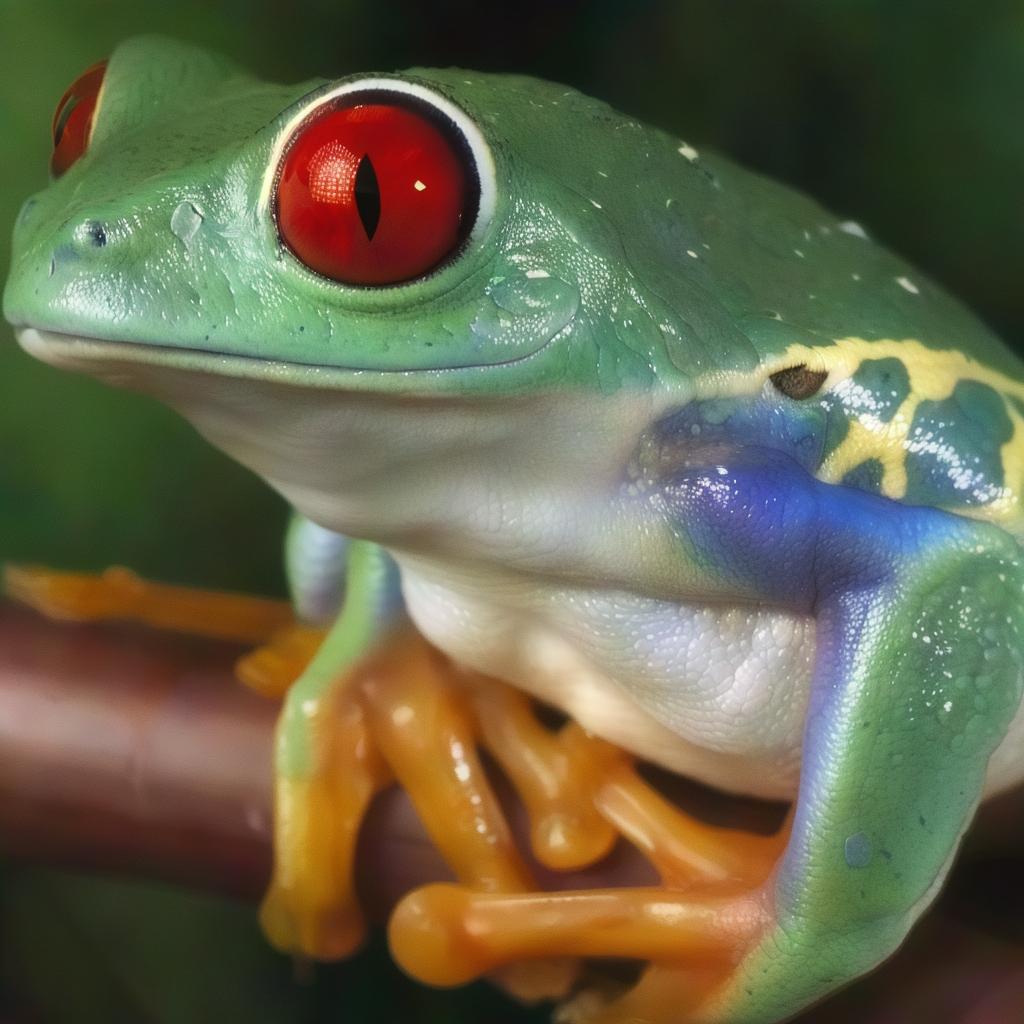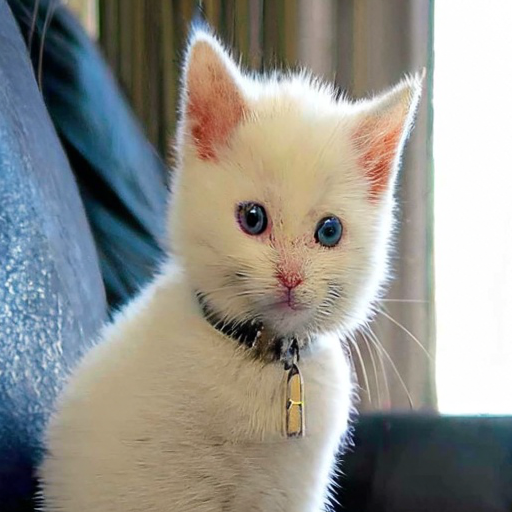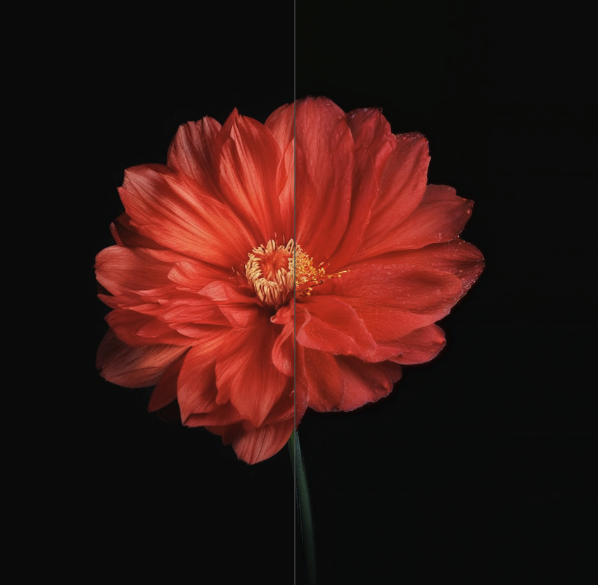pasd-magnify
Maintainer: lucataco

30

| Property | Value |
|---|---|
| Model Link | View on Replicate |
| API Spec | View on Replicate |
| Github Link | View on Github |
| Paper Link | View on Arxiv |
Create account to get full access
Model overview
pasd-magnify is a Pixel-Aware Stable Diffusion model developed by lucataco for realistic image super-resolution and personalized stylization. It builds upon the capabilities of the Stable Diffusion model, incorporating pixel-level awareness to enhance image quality and fidelity. The model can be compared to similar upscaling and refinement models like multidiffusion-upscaler, dreamshaper-xl-lightning, and magic-image-refiner.
Model inputs and outputs
pasd-magnify takes in an input image and various parameters to control the upscaling and stylization process. The model can then generate a high-quality, upscaled and stylized output image.
Inputs
- Image: The input image to be processed
- Prompt: The textual prompt describing the desired output
- Negative Prompt: The textual prompt describing what the output should not contain
- Denoise Steps: The number of denoising steps to perform during the process
- Guidance Scale: The scale of the guidance to control the strength of the prompt
- Upsample Scale: The scale factor for upsampling the image
- Conditioning Scale: The scale factor for the image conditioning
Outputs
- Output Image: The high-quality, upscaled and stylized output image
Capabilities
pasd-magnify can generate highly detailed and realistic images by combining the power of Stable Diffusion with pixel-level awareness. The model is able to upscale images while preserving fine details and textures, and can also apply personalized stylization to the output.
What can I use it for?
pasd-magnify can be used for a variety of applications, such as enhancing the quality of low-resolution images, creating high-resolution artwork or illustrations, and even generating custom-styled images for branding or design purposes. The model's capabilities can be particularly useful for creators, designers, and businesses looking to improve the visual quality and impact of their content.
Things to try
One interesting aspect of pasd-magnify is its ability to generate highly detailed and realistic images while still allowing for personalized stylization. Users could experiment with different prompts and parameter settings to explore the range of outputs, from photorealistic to more abstract or artistic renderings. Additionally, the model's pixel-level awareness could be leveraged to create seamless upscaling and refinement of images, potentially improving the quality and consistency of visual assets used in various projects or applications.
This summary was produced with help from an AI and may contain inaccuracies - check out the links to read the original source documents!
Related Models

stable-diffusion-x4-upscaler

6
The stable-diffusion-x4-upscaler is an AI model developed by Stability AI and maintained by lucataco. It is an implementation of the Stable Diffusion x4 upscaler model, which can be used to enhance the resolution of images. This model is similar to other Stable Diffusion-based models like stable-diffusion-inpainting, dreamshaper-xl-lightning, and pasd-magnify in its use of the Stable Diffusion framework. Model inputs and outputs The stable-diffusion-x4-upscaler model takes in a grayscale input image and a text prompt, and outputs an upscaled image. The input image can be scaled by a factor of up to 4, and the text prompt can be used to guide the upscaling process. Inputs Image**: A grayscale input image Scale**: The factor to scale the image by, with a default of 4 Prompt**: A text prompt to guide the upscaling process, with a default of "A white cat" Outputs Output**: The upscaled image Capabilities The stable-diffusion-x4-upscaler model can be used to enhance the resolution of images while preserving the content and style of the original image. It can be particularly useful for tasks like enlarging low-resolution images or generating high-quality images from sketches or low-quality source material. What can I use it for? The stable-diffusion-x4-upscaler model can be used for a variety of image-related tasks, such as creating high-quality images for marketing materials, enhancing the resolution of family photos, or generating concept art for games and animations. The model's ability to preserve the content and style of the original image makes it a versatile tool for creative projects. Additionally, the model's maintainer, lucataco, has developed other Stable Diffusion-based models like dreamshaper-xl-lightning and pasd-magnify that may be of interest for similar use cases. Things to try One interesting aspect of the stable-diffusion-x4-upscaler model is its ability to generate high-quality images from low-resolution input. This can be particularly useful for tasks like restoring old photographs or creating high-quality images from sketches or low-quality source material. Additionally, experimenting with different text prompts can result in unique and creative upscaled images, allowing users to explore the model's capabilities in generating content-aware image enhancements.
Updated Invalid Date

demofusion-enhance

9
The demofusion-enhance model is an image-to-image enhancer that uses the DemoFusion architecture. It can be used to upscale and improve the quality of input images. The model was created by lucataco, who has also developed similar models like demofusion, pasd-magnify, illusion-diffusion-hq, and sdxl-img-blend. Model inputs and outputs The demofusion-enhance model takes an input image and various parameters, and outputs an enhanced version of the image. The inputs include the input image, a prompt, a negative prompt, guidance scale, and several other hyperparameters that control the enhancement process. Inputs image**: The input image to be enhanced prompt**: The text prompt to guide the enhancement process negative_prompt**: The negative prompt to exclude certain undesirable elements guidance_scale**: The scale for classifier-free guidance num_inference_steps**: The number of denoising steps to perform stride**: The stride of moving local patches sigma**: The standard deviation of the Gaussian filter cosine_scale_1, **cosine_scale_2, cosine_scale_3: Controls the strength of various enhancement techniques multi_decoder**: Whether to use multiple decoders view_batch_size**: The batch size for multiple denoising paths seed**: The random seed to use (leave blank to randomize) Outputs Output**: The enhanced version of the input image Capabilities The demofusion-enhance model can be used to improve the quality and resolution of input images. It can remove artifacts, sharpen details, and enhance the overall aesthetic of the image. The model is capable of handling a variety of input image types and can produce high-quality output images. What can I use it for? The demofusion-enhance model can be useful for a variety of applications, such as: Enhancing low-resolution or poor-quality images for use in design, photography, or other creative projects Improving the visual quality of images for use in web or mobile applications Upscaling and enhancing images for use in marketing or advertising materials Preparing images for printing or other high-quality output Things to try With the demofusion-enhance model, you can experiment with different input parameters to see how they affect the output. Try adjusting the guidance scale, the number of inference steps, or the various cosine scale parameters to see how they impact the level of enhancement. You can also try using different input images and prompts to see how the model handles different types of content.
Updated Invalid Date

illusion-diffusion-hq

328
The illusion-diffusion-hq model is a variant of the popular Stable Diffusion text-to-image AI model, developed by lucataco and built on top of the Realistic Vision v5.1 model. It incorporates Monster Labs' QR code control net, allowing users to generate QR codes and embed them into their generated images. This model can be seen as an extension of other ControlNet-based models like sdxl-controlnet, animatediff-illusions, and controlnet-1.1-x-realistic-vision-v2.0, all of which leverage ControlNet technology to enhance their image generation capabilities. Model inputs and outputs The illusion-diffusion-hq model takes a variety of inputs, including a text prompt, an optional input image, and various parameters to control the generation process. These inputs allow users to fine-tune the output and shape the generated image to their desired specifications. The model then outputs one or more high-quality images based on the provided inputs. Inputs Prompt**: The text prompt that guides the image generation process. Image**: An optional input image that the model can use as a reference or starting point for the generation. Seed**: A numerical seed value that can be used to ensure reproducibility of the generated image. Width/Height**: The desired width and height of the output image. Num Outputs**: The number of images to generate. Guidance Scale**: A parameter that controls the influence of the text prompt on the generated image. Negative Prompt**: A text prompt that specifies elements to be avoided in the generated image. QR Code Content**: The website or content that the generated QR code will point to. QR Code Background**: The background color of the raw QR code. Num Inference Steps**: The number of diffusion steps used in the generation process. ControlNet Conditioning Scale**: A parameter that controls the influence of the ControlNet on the final output. Outputs Generated Images**: One or more high-quality images that reflect the provided inputs and prompt. Capabilities The illusion-diffusion-hq model is capable of generating high-quality images with embedded QR codes, which can be useful for a variety of applications, such as creating interactive posters, product packaging, or augmented reality experiences. The model's ability to incorporate ControlNet technology allows for more precise control over the generated images, enabling users to fine-tune the output to their specific needs. What can I use it for? The illusion-diffusion-hq model can be used for a variety of creative and practical applications, such as: Interactive Media**: Generate images with embedded QR codes that link to websites, videos, or other digital content, creating engaging and immersive experiences. Product Packaging**: Design product packaging with QR codes that provide additional information, tutorials, or purchase links for customers. Augmented Reality**: Integrate the generated QR code images into augmented reality applications, allowing users to interact with digital content overlaid on the physical world. Marketing and Advertising**: Create visually striking and interactive marketing materials, such as posters, flyers, or social media content, by incorporating QR codes into the generated images. Things to try Experiment with different text prompts, input images, and parameter settings to see how they affect the generated QR code images. Try incorporating the QR codes into various design projects or using them to unlock digital content for an added layer of interactivity. Additionally, explore how the model's ControlNet capabilities can be leveraged to fine-tune the output and achieve your desired results.
Updated Invalid Date

ssd-1b-img2img

3
The ssd-1b-img2img model is a Segmind Stable Diffusion Model (SSD-1B) that can generate images based on input prompts. It is capable of performing image-to-image translation, where an existing image can be used as a starting point to generate a new image. This model was created by lucataco, who has also developed similar models like the ssd-1b-txt2img_batch, lcm-ssd-1b, ssd-lora-inference, stable-diffusion-x4-upscaler, and thinkdiffusionxl. Model inputs and outputs The ssd-1b-img2img model takes in an input image, a prompt, and various optional parameters like seed, strength, scheduler, guidance scale, and negative prompt. The model then generates a new image based on the input image and prompt. Inputs Image**: The input image to be used as a starting point for the generation. Prompt**: The text prompt that describes the desired output image. Seed**: A random seed value to control the randomness of the generation. Strength**: The strength or weight of the prompt in relation to the input image. Scheduler**: The algorithm used to schedule the denoising process. Guidance Scale**: The scale for classifier-free guidance, which controls the balance between the input image and the prompt. Negative Prompt**: A prompt that describes what should not be present in the output image. Num Inference Steps**: The number of denoising steps to perform during the generation process. Outputs Output**: The generated image, which is returned as a URI. Capabilities The ssd-1b-img2img model can be used to generate highly detailed and realistic images based on input prompts and existing images. It is capable of incorporating various artistic styles and can produce images across a wide range of subjects and genres. The model's ability to perform image-to-image translation allows users to take an existing image and transform it into a new image that matches their desired prompt. What can I use it for? The ssd-1b-img2img model can be used for a variety of creative and practical applications, such as: Content creation**: Generating images for use in blogs, social media, or marketing materials. Concept art and visualization**: Transforming rough sketches or existing images into more polished, detailed artworks. Product design**: Creating mockups or prototypes of new products. Photo editing and enhancement**: Applying artistic filters or transformations to existing images. Things to try With the ssd-1b-img2img model, you can experiment with a wide range of prompts and input images to see the diverse range of outputs it can produce. Try combining different prompts, adjusting the strength and guidance scale, or using various seeds to explore the model's capabilities. You can also explore the model's performance on different types of input images, such as sketches, paintings, or photographs, to see how it handles different starting points.
Updated Invalid Date